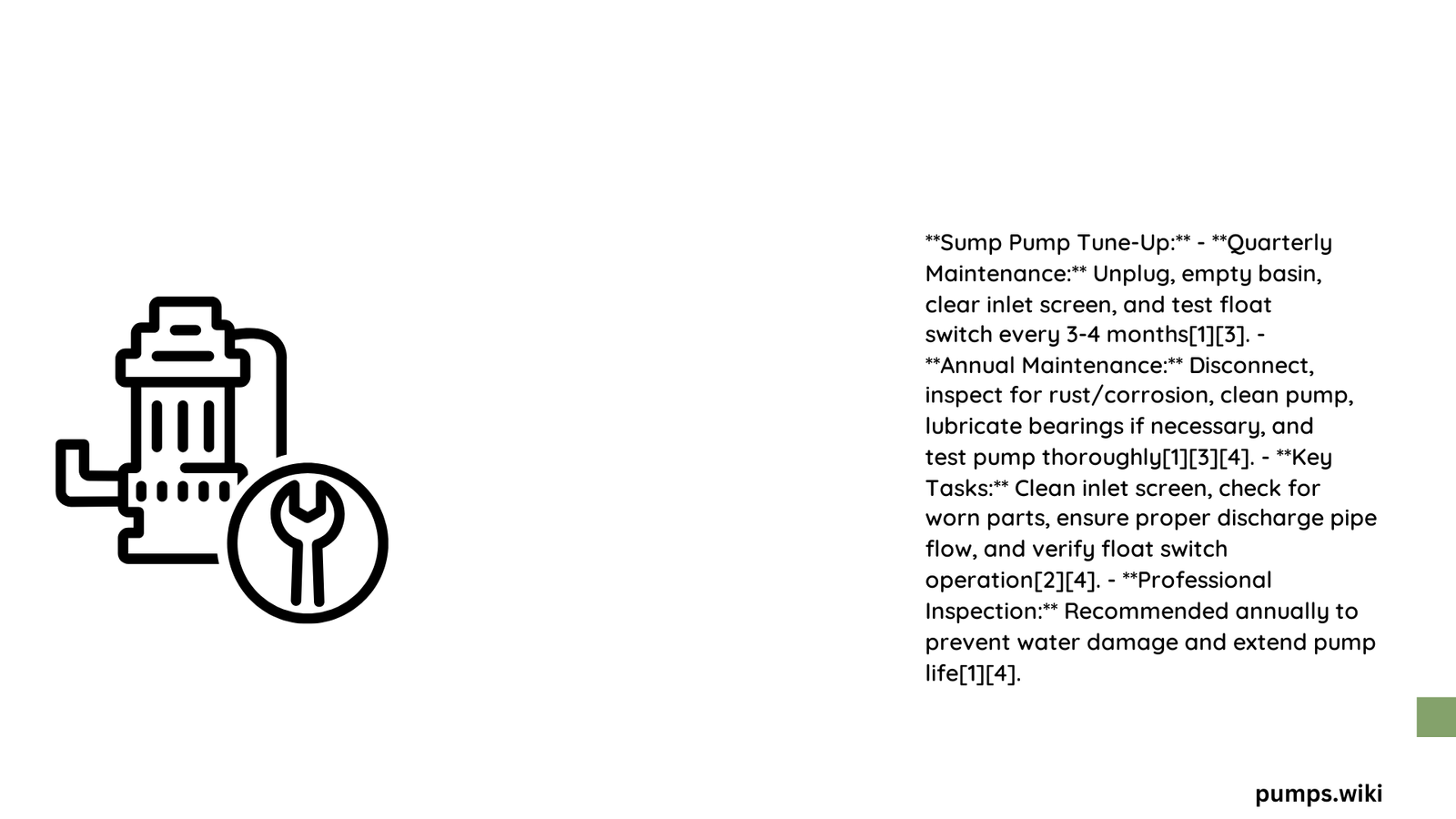A sump pump tune up is critical for protecting your home from water damage and ensuring optimal performance during heavy rainfall or flooding. Homeowners who regularly maintain their sump pump can prevent costly water damage, extend equipment life, and maintain a dry, safe basement environment. This comprehensive guide will walk you through every aspect of sump pump maintenance, from monthly inspections to annual deep cleaning.
What Is a Sump Pump Tune Up?
A sump pump tune up involves systematic inspection, cleaning, and testing of your basement’s water removal system. This proactive approach helps identify potential issues before they become expensive emergencies.
Why Should You Perform Regular Sump Pump Maintenance?

| Maintenance Benefit | Impact |
|---|---|
| Prevent Water Damage | Reduces risk of basement flooding |
| Extend Equipment Life | Saves money on premature replacements |
| Ensure Reliability | Guarantees pump works during critical moments |
| Identify Early Issues | Catches potential problems before they escalate |
How Often Should You Perform a Sump Pump Tune Up?
Monthly Maintenance Tasks
- Visually inspect pump exterior
- Test pump functionality
- Check power cord condition
- Verify float switch movement
Quarterly Deep Cleaning
- Clean inlet screen thoroughly
- Inspect electrical connections
- Flush entire system
- Test backup power source
Annual Comprehensive Inspection
- Detailed system evaluation
- Replace worn components
- Lubricate moving parts
- Perform full system diagnostic
What Tools Do You Need for Sump Pump Tune Up?
Essential tools include:
1. Safety glasses
2. Rubber gloves
3. Multimeter
4. Wire brush
5. Garden hose
6. Lubricating oil
7. Cleaning rags
How to Perform a Detailed Sump Pump Tune Up
Step 1: Visual Inspection
- Check for visible rust or corrosion
- Examine power cord for damage
- Ensure pump is level and stable
- Look for any signs of wear
Step 2: Functional Testing
- Unplug pump
- Clean sump pit thoroughly
- Remove debris and sediment
- Fill pit with water
- Plug pump back in
- Observe pump activation and water removal
Step 3: Electrical System Check
- Test voltage with multimeter
- Verify proper grounding
- Check backup battery condition
- Inspect electrical connections
Common Sump Pump Tune Up Challenges
Potential Issues to Watch
- Unusual grinding noises
- Inconsistent water removal
- Frequent cycling
- Visible rust or corrosion
- Battery degradation
Professional vs. DIY Sump Pump Tune Up
| Approach | Pros | Cons |
|---|---|---|
| DIY Maintenance | Cost-effective | Requires technical knowledge |
| Professional Service | Expert diagnosis | Higher cost |
Cost Considerations for Sump Pump Tune Up
Average maintenance costs:
– Basic DIY tune up: $20-$50
– Professional service: $100-$300
– Potential repair costs: $200-$800
Expert Tips for Effective Sump Pump Maintenance
- Always disconnect power before maintenance
- Keep detailed maintenance records
- Replace backup battery every 2-3 years
- Consider installing water alarm system
- Maintain clear drainage area around discharge pipe
When to Replace Your Sump Pump
Signs indicating replacement:
1. Pump is over 7-10 years old
2. Frequent repairs needed
3. Inconsistent performance
4. Excessive noise during operation
5. Visible significant wear
Seasonal Sump Pump Tune Up Considerations
Winter Preparation
- Insulate discharge pipe
- Check for potential freezing points
- Ensure backup power is functional
Spring Readiness
- Clean accumulated winter debris
- Test pump after snow melt season
- Inspect for any winter damage
Conclusion
Regular sump pump tune up is not just maintenance—it’s an investment in your home’s protection. By following these comprehensive guidelines, homeowners can ensure their sump pump remains a reliable defense against potential water damage.
References:
– SafetyCulture Sump Pump Maintenance Guide
– Smedley Plumbing Maintenance Checklist
– YouTube Sump Pump Maintenance Tutorial
